#North American Native Plants
Explore tagged Tumblr posts
Text
Virginia Bluebells (Mertensia virginica)
Blue flowers are relatively rare. Most incline to violet or else are quite small. But Virginia bluebells are a striking exception. All my photos from my garden, unedited.


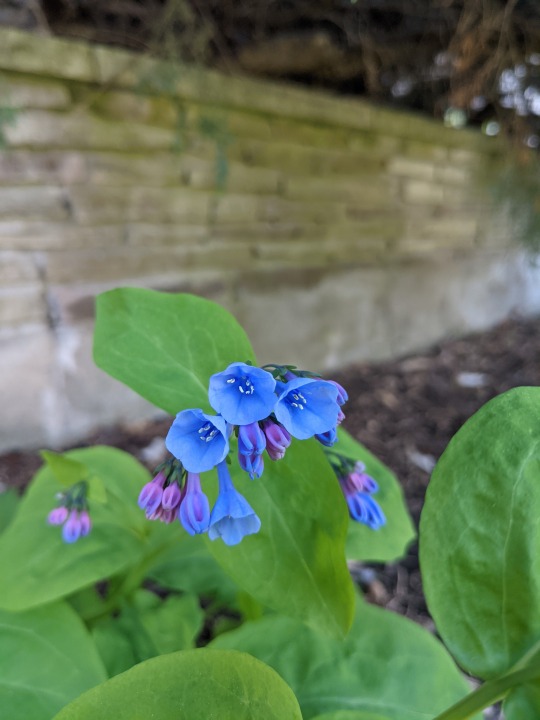



I'm not kidding. They really are that blue naturally. They bloom in May. Then they slowly decline and the entire plants are gone above soil by the summer. Only to reappear the following spring! The shoots and flower buds are edible. You don't want to take too much, though. As spring ephemerals, they need the energy they make with their leaves during their short growing period. The short bloom period is also why I don't have more photos of them. They don't even bloom every year.
#photography#my photos#blackswallowtailbutterfly#Virginia bluebells#Mertensia virginica#flowers#blue flowers#wildflowers#gardening#native species#North American native plants#edible wild plants#my garden#native plants of Ontario and the northeastern USA#spring ephemerals
23 notes
·
View notes
Text

caulophyllum thalictroides blue cohosh albert fw vick jr, 1988, lady bird johnson wildflower center
13 notes
·
View notes
Text
HEUCHERA
This week's Rhombus House Garden post is a simple PSA to let you know that I fucking love Heuchera (aka Coralbells).
They're shade tolerant, perennial and hardy in zone 4, divisible every 2-3 years so that then you have twice as many heucheras. They're native from Ontario to Georgia and Nebraska to Louisiana.
They are the "oops all berries!" of garden plants with leaves as bright and colorful as the flowers of other plants.
Check this out.
Simulate an autumnal forest floor from spring through frost.

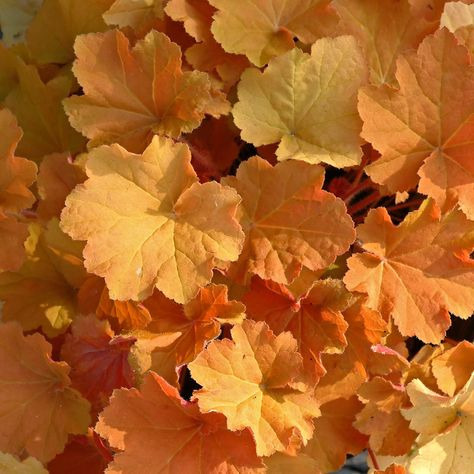
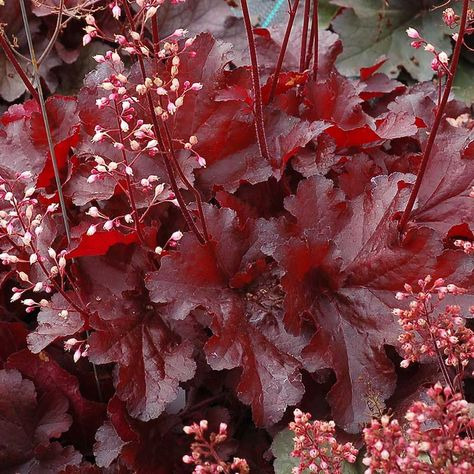
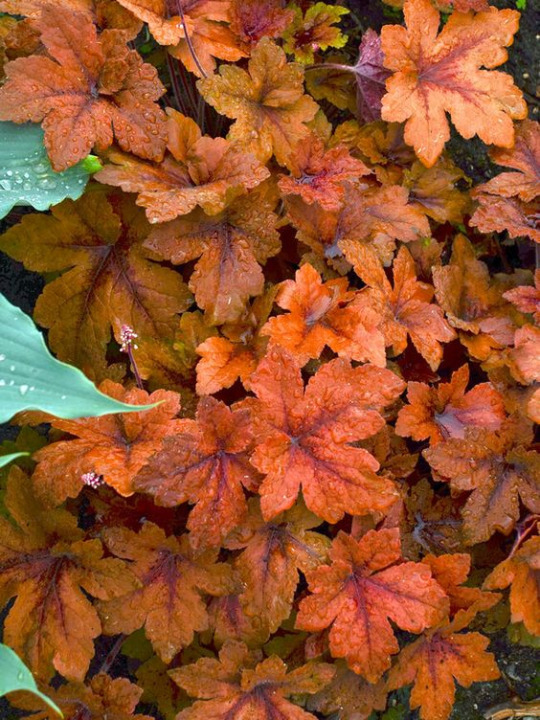
Or, go goth!
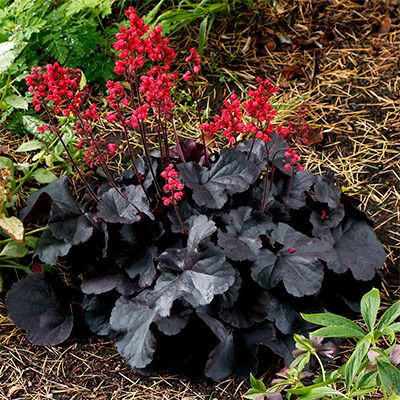

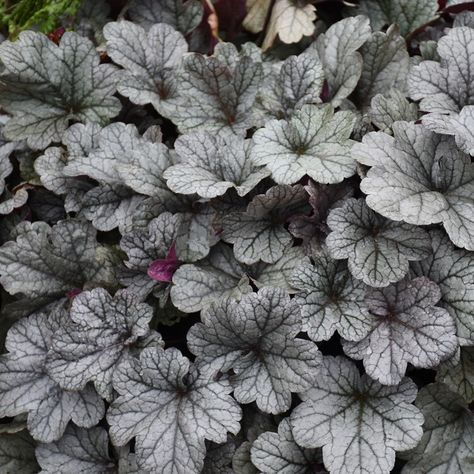

Get FANCY with variegation and coloring!
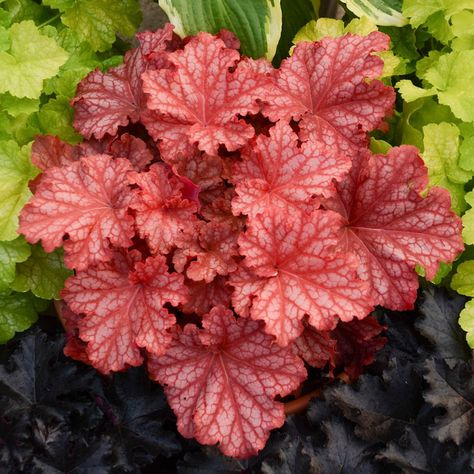

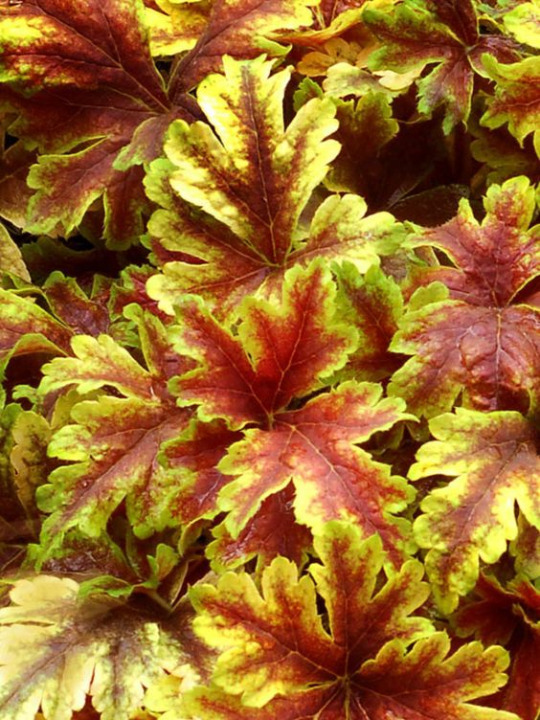

Celebrate your love for Color Theory!
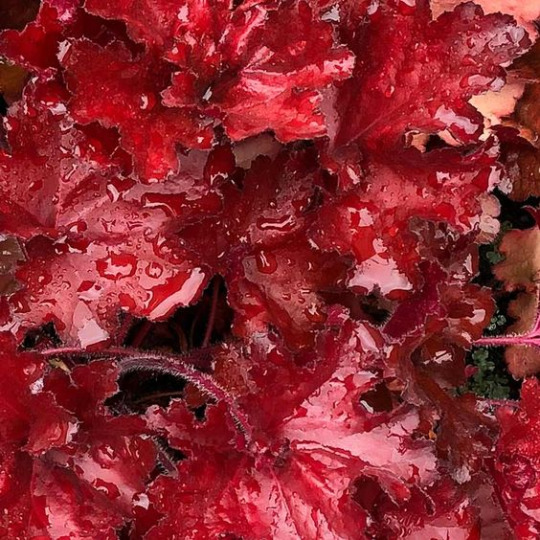
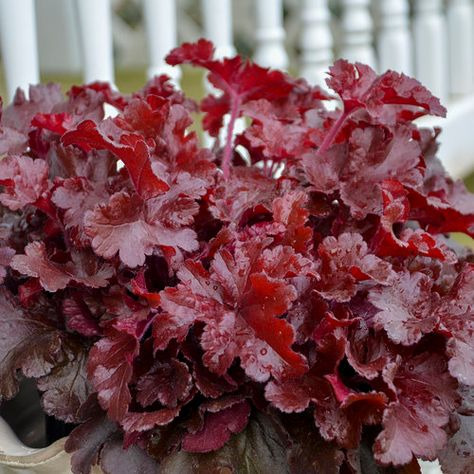


You can even do pastels if that's your jam.
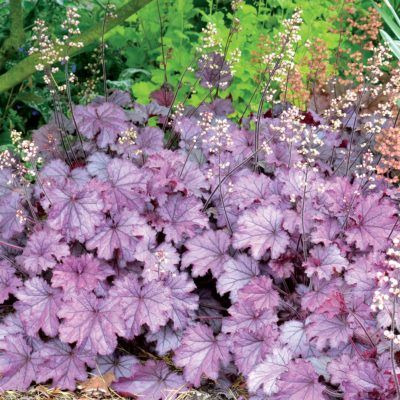
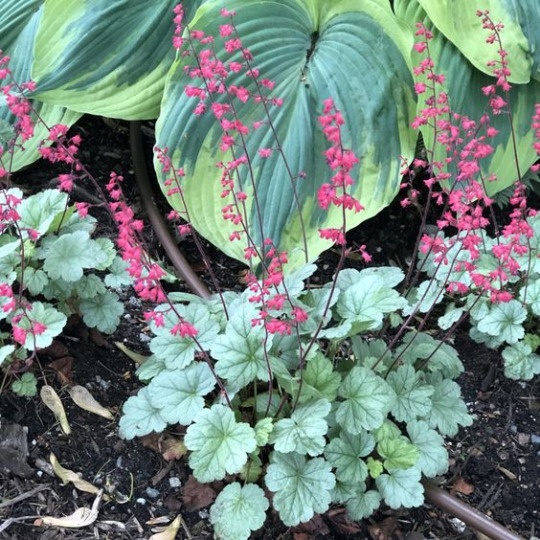
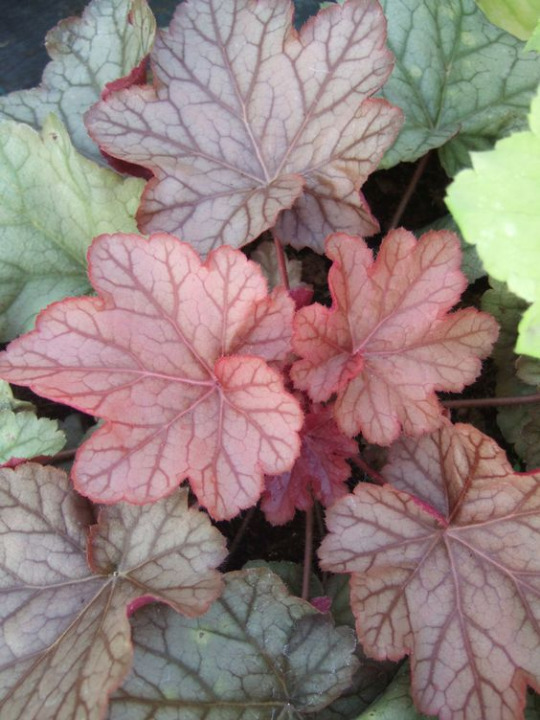

Anyways, please appreciate Heucheras. This barely scratches the surface of their beauty and variety!
36 notes
·
View notes
Text
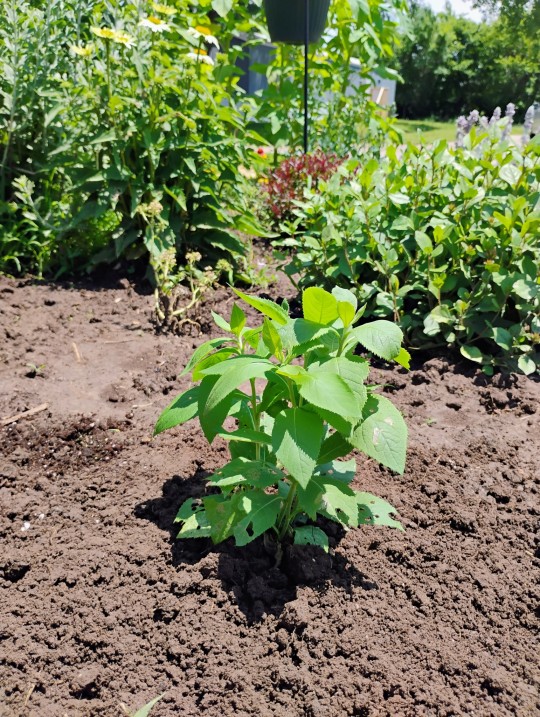
June 1
My farmer's market has some vendors selling some awesome plants - for so late in the season I was thrilled!
This is Ironweed vernonia native to the Flint Hills. Super excited to see a vendor getting into the native plants.
My garden has yarrow, echinacea, and now Ironweed. It will produce bright purple spiky flowers in July. I will win the native plant game somehow.
I also nabbed some nasturtiums and a VERY pretty dwarf crepe myrtle (mocha red).
Better yet, this was the vendor's shop. It was soooo cute inside.

Got some decorative peppers to try and maintain some color in my yard as we get into August. I need to find some mums somewhere.
#mobile home garden#trailer park garden#trailer park tom bombadil#gardening#gardeners on tumblr#north american native plants#flint hills#garden#ironweed vernonia#nasturtiums#cottage core#flower garden#gardenblr#gardeners of tumblr
5 notes
·
View notes
Text

#my art#og art#north american river otter#otter#mustelids#weasels#animals#mammals#native plants#flowers#black eyed susan#purple coneflower#art w backgrounds#messy#ms paint#plants#foliage
137 notes
·
View notes
Text

Bombus pensylvanicus on Asclepias tuberosa / American Bumblebee on Butterfly Weed
#Bombus pensylvanicus#Bombus#apidae#Asclepias tuberosa#Asclepias#apocynaceae#American Bumblebee#bumblebee#Bees#Butterfly Weed#Milkweed#Native bees#Native pollinators#Native plants#Native flowers#Pollinators#Plants#Flowers#Wildflowers#Nature photography#photography#photographers on tumblr#Durham#Durham NC#North Carolina#Home#🌺🌻
16 notes
·
View notes
Text
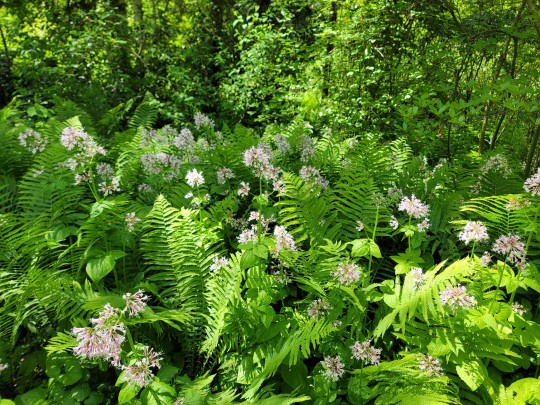

Ostrich Fern Garden at Mt Cuba - May 6th 2023
#for once i geniunely dont know what the flower is#ostrich fern#forest#nature#photographers on tumblr#spring#delware#mt cuba#eastern north american native plants
193 notes
·
View notes
Text
How to Identify American Holly
Click here to learn more about the How to Identify article series.
Name: American Holly (Ilex opaca)
Range and typical habitat(s): Typically southeastern United States, from eastern Texas to the Atlantic coast, southern Missouri, and central Florida to scattered portions of New England. iNaturalist observations also place it in portions of Michigan, Illinois, Ohio, and Oklahoma, showing some expansion compared to the 2014 BONAP map, so its range may be expanding in response to climate change. In most of its range it is an understory tree growing in the shade of larger species. However, in Florida’s scrub habitat it grows as a shrub.

Photo by Derek Ramsay, GNU FDL 1.2
Distinguishing physical characteristics (size, colors, overall shapes, detail shapes): At first glance American holly looks quite similar to the European holly (Ilex aquifolium) so commonly used got holiday decorations (more about the differences between the two below.) It has medium to dark green oval-shaped leaves, sometimes with a yellowish tint, whose margins (edges) have concave curves between sharp points that are regularly spaced; large leaves may reach three inches long.

Photo by Famartin, CCA-SA-4.0-INTL
The American holly’s leaves have a leathery, stiff texture, and may appear waxy, and the underside is paler, often yellow in color. Each leaf has a central vein (midrib) that is depressed, appearing almost like a deep crease. Thinner veins branch off of both sides of the midrib. Some leaves may display smooth margins instead of the more typically spiky ones, especially when they are high enough to be out of the reach of browsing herbivores like deer.
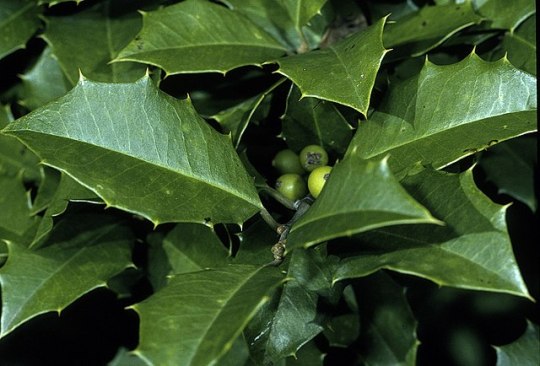
The foliage stays green throughout the year rather than being shed in fall; a given leaf may stay on the tree for up to three years before being displaced by a new replacement leaf. The leaves grow in an alternate pattern along a twig, with each leaf growing a little further along the twig than the last. The tree’s branches and trunk are covered in pale gray bark that is relatively smooth, but may have horizontal and vertical striations, along with various nodes and bumps, and might also play host to white patches of microlichen colonies. Other lichens, as well as mosses, also may add color to the American holly’s bark.
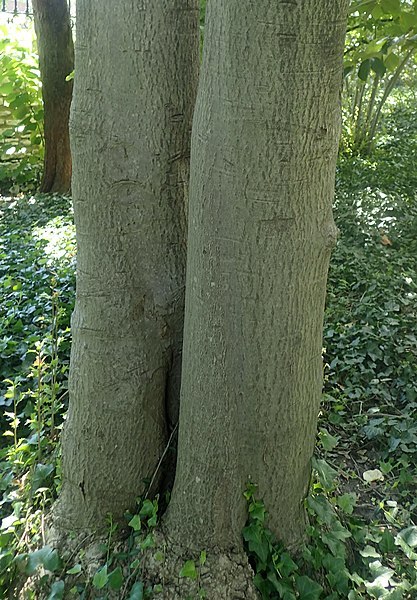
Photo by Krzysztof Ziarnek, CCA-SA-4.0-INTL
An exceptional specimen of American holly can reach almost 100 feet tall when mature, though it grows slowly. Such large trees are generally a century or more old, and the oldest on record was just a few years shy of 150.
The flowers of American holly are small (1/2″ or less across) with green centers and four (sometimes six) white petals that are broad with a rounded end, and whose tips curve back toward the plant. They grow in clusters of several flowers sprouting from one spot. American holly is dioecious, meaning that there are female and male plants; the males tend to reach sexual maturity a few years earlier than the females, but they all are generally reproducing by the age of ten.
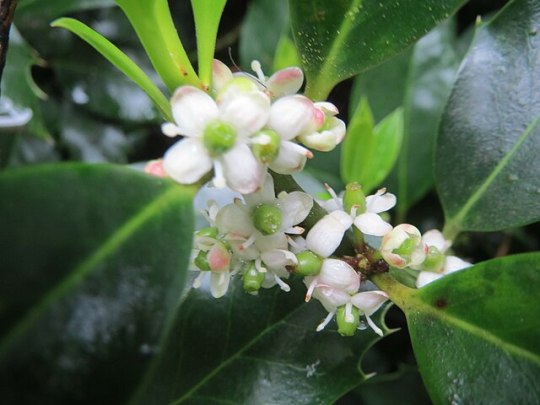
When fertilized by insects the female flowers then turn into the well-known red berries. Technically these are drupes rather than true berries, with four seeds apiece, and while they start out green they ripen to a bright red. The berries are popular with birds like cedar waxwings (Bombycilla cedrorum), but are toxic to humans and our pets.
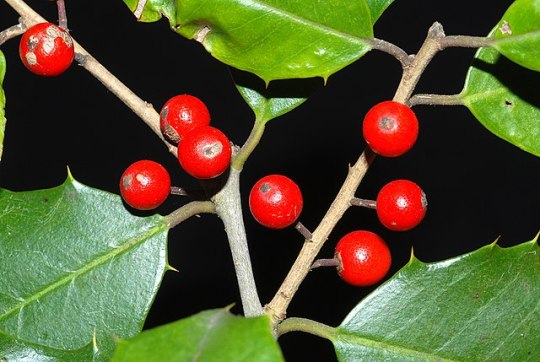
Photo by Douglas Goldman, CCA-SA-4.0
Other organisms it could be confused with and how to tell the difference: Due to their similarity, American holly and European holly may easily be confused at first glance, and both prefer the understory of a forest. However, the European species does not grow as large. The leaves of European holly are darker and have a glossier appearance; the edges may also be more warped where those of American holly lie comparatively flat. Moreover, European holly grows more commonly along the west coast of North America, and is more sparse throughout American holly’s native range, especially outside of cultivated spaces.

European holly (Ilex aquifolium)
Yaupon holly (Ilex vomitoria) is another species native to the southeastern North America, particularly the Gulf Coast states and the southern third of the Atlantic coast. It is a much smaller shrub that rarely exceeds thirty feet tall, and its leaves are round with serrated or scalloped edges rather than the pointed margins of American holly. The petals of the flowers may not curve as much as on American holly.

Yaupon holly (Ilex vomitoria)
Dahoon holly (Ilex cassine) also grows in the extreme southeastern United States, from Louisiana to the southern tip of North Carolina, and primarily along the coastline except in Florida where it can be found across much of the peninsula. Its leaves are longer and more slender than those of American holly, and the margins are almost entirely smooth except for a series of very small spikes.

Dahoon holly (Ilex cassine). Photo by Douglas Goldman, CCA-SA-4.0
Possumhaw (Ilex decidua) has long, slender leaves with a gently pointed tip and serrated edges. This deciduous plant drops its leaves in fall, unlike the evergreen American holly.

Possumhaw (Ilex decidua)
There are other plants that have similar leaves to American holly but that grow out of its range, such as the various species of Oregon grape (Mahonia spp.) in the Pacific Northwest, and holm oak (Quercus ilex), for which the genus Ilex was originally named.
Further reading:
USDA: American Holly
North Carolina Extension Gardener Plant Toolbox: Ilex opaca
Missouri Botanical Garden Plant Finder: Ilex opaca
Native Plant Trust: Ilex opaca – American holly
University of Connecticut Plant Database: Ilex opaca
Did you enjoy this post? Consider taking one of my online foraging and natural history classes or hiring me for a guided nature tour, checking out my other articles, or picking up a paperback or ebook I’ve written! You can even buy me a coffee here!
#holly#American holly#North America#native plants#Ilex#shrubs#plants#plant identification#nature identification#botany#trees#ecology#conservation#biodiversity#long post#nature#Yule#Christmas#holidays#scicomm
12 notes
·
View notes
Text

Hey #Lovers❤️🔥! Experience the magic of muscadine grapes 🍇 on 🌺RAW1111.COM🥑. Discover why these Southern “bullets” 🎯 are a must-try! #GVWU Go Vegan With Us 🌱💚
#muscadines#bullet#grapes#native#native americans#native american#native plants#native flowers#north america#native tribes#cherokee#creek#spanish#south#ancient history#history#educate yourself#education#vegan#raw vegan#nature#vegan food#fruits#vegetables#vegan lifestyle#realnessalwayswins#gvwu#plantbased
2 notes
·
View notes
Text
youtube
3 notes
·
View notes
Text
Michigan lilies (Lilium michiganensis)
These are from my garden. Unedited. They're also the real deal. Not a cultivar, not a hybrid. They really grow like this in the wild.

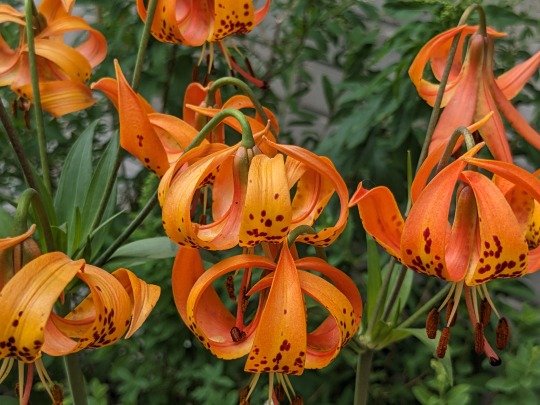

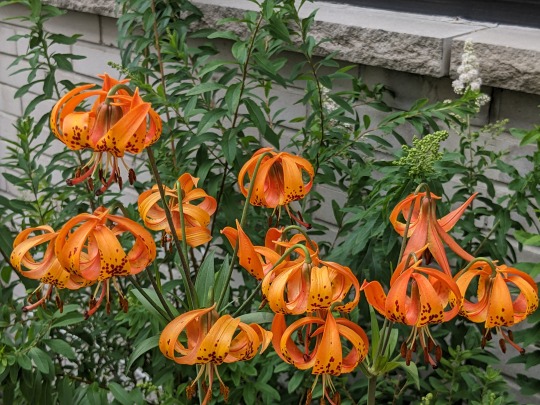







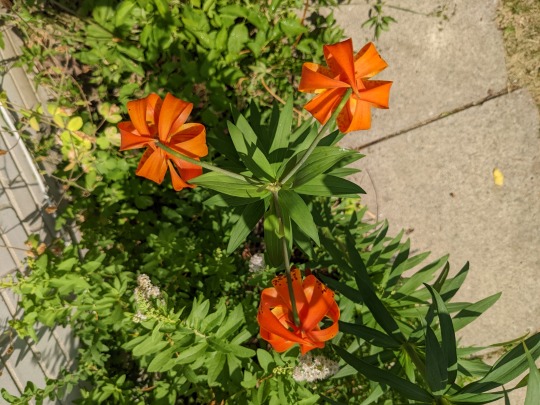
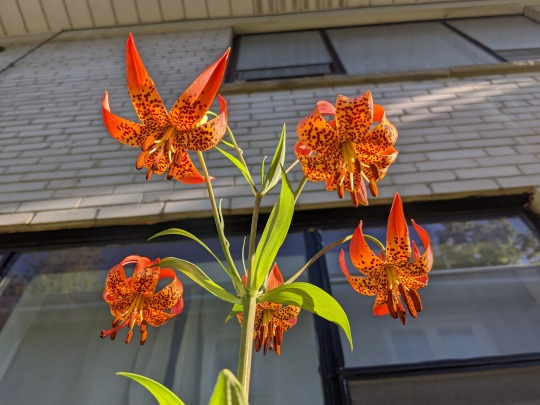

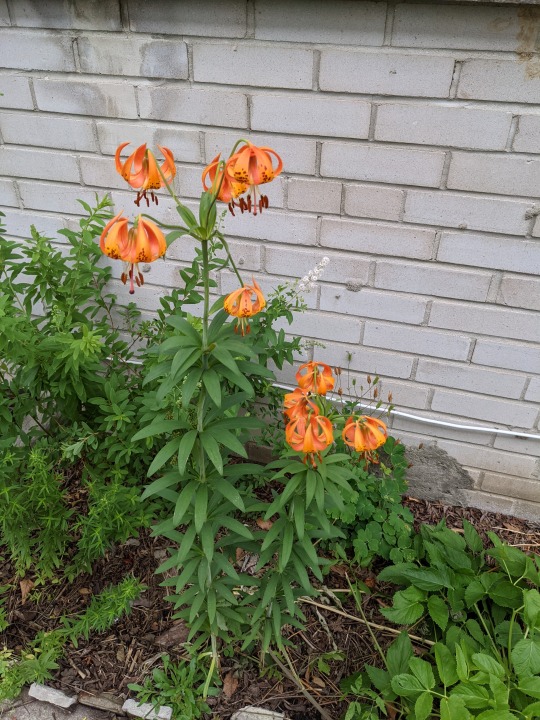
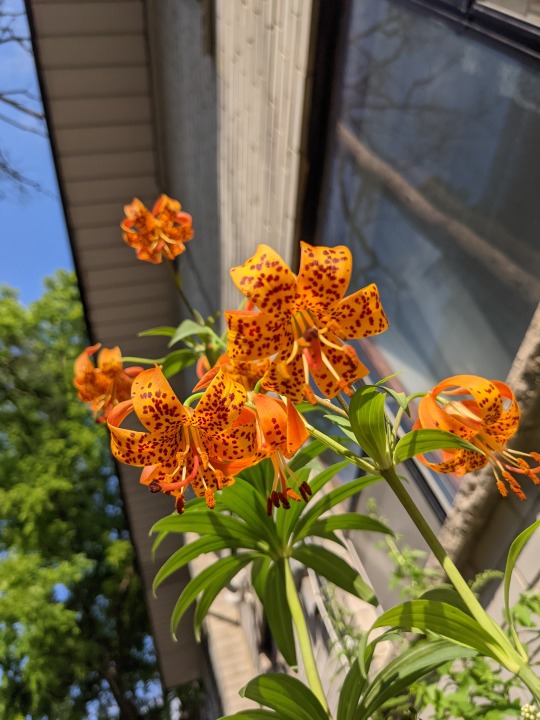
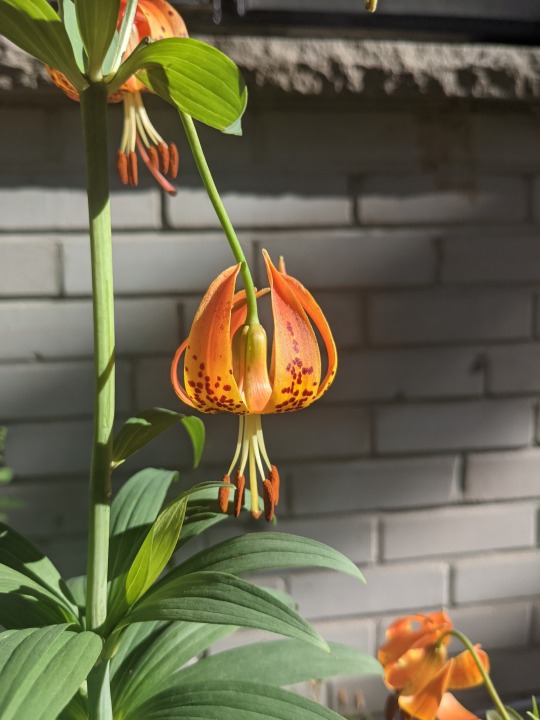



They bloom in June and spread slowly but exponentially. Flower petals and bulbs are edible cooked (all parts are toxic to cats and dogs though). :)
#photography#my photos#blackswallowtailbutterfly#Michigan lily#Lilium michiganensis#flowers#lilies#true lilies#orange flowers#wildflowers#gardening#native species#North American native plants#edible wild plants#my garden#native plants of Ontario and the northeastern USA
7 notes
·
View notes
Text

hepatica nobilis var. acuta sharplobe hepatica albert fw vick jr, 1989, lady bird johnson wildflower center
7 notes
·
View notes
Text
Native American Ethnobotany Database
For anyone who studies North American botany (especially ethnobotany, but quite frankly, I feel like anyone involved in botany could improve by garnering a better understanding of human connections with plants), there is a database outlining the various uses of plants by the various indigenous North American tribes.
You can look up plants by common names, binomials, and even use.
The sources are fairly outdated, and the entires are not particularly detailed. Overall, the database leaves much to want. However, they're a good place to start. I hope there are databases with more native peoples involvement in the making, but again, this'll do for a starting place for those of us who can't receive the traditional teachings.
NAEB

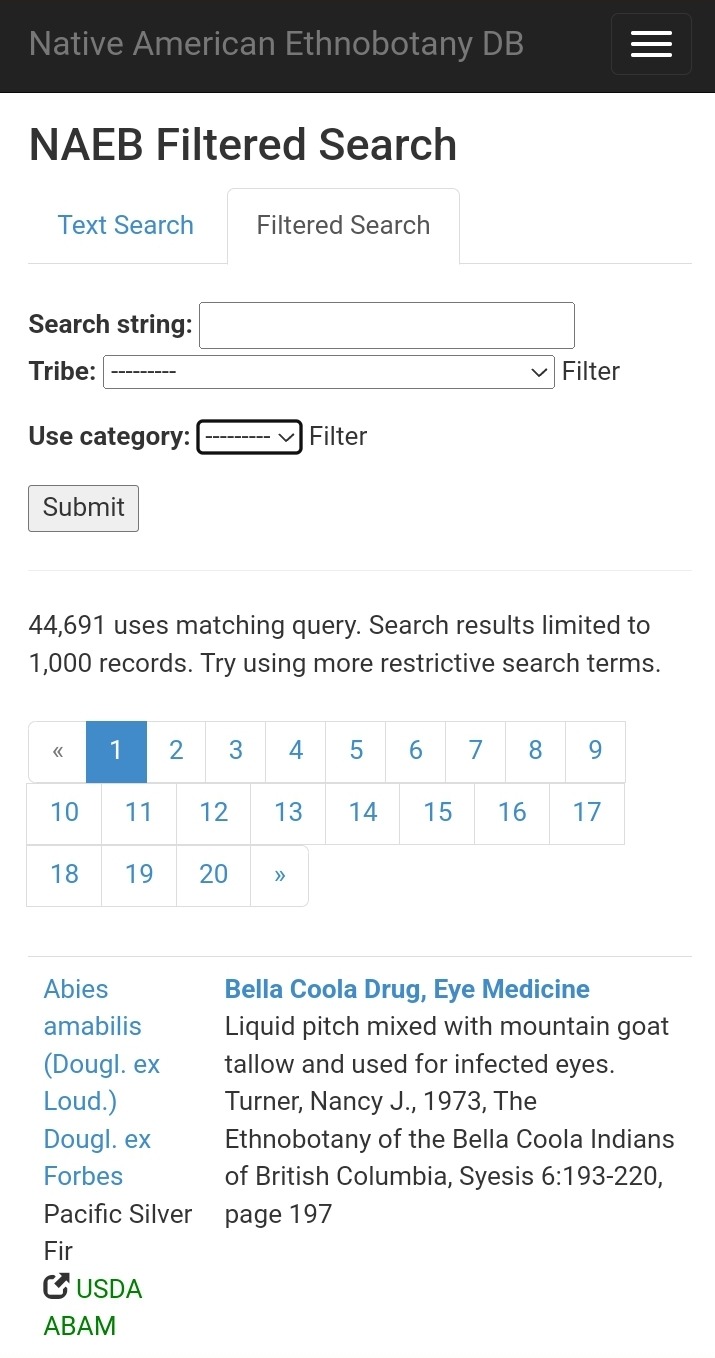
4 notes
·
View notes
Text










Very nice morning today. Everything was wet with dew. Lots of animals running and flying around.
#toronto#birds of tumblr#nature#wild animals#wild birds#wildlife photography#animal photography#wildlife pictures#birds of north america#birdwatching#racoon#raccoon#cute#gold finch#the goldfinch#great blue heron#bird photography#bird watching#damsel fly#flowering rasberry#rubus#Rubus odoratus#native plants#eastern cotton tail#robin#american robin#nesting birds
5 notes
·
View notes
Text


bloodroots sound more metal than they are. but-- spooky season is here, soooo
(my photos: April 2021)
#botany#bloodroot#Sanguinaria canadensis#spring ephemerals#trees and forests#woodland#native plants#plantblr#nature photography#spooky season#original photography on tumblr#north american flora#midwestern flora
7 notes
·
View notes
Text

Symphyotrichum oblongifolium / Aromatic Aster at the Sarah P. Duke Gardens at Duke University in Durham, NC
#Symphyotrichum oblongifolium#Symphyotrichum#Asteraceae#Aromatic Aster#Aster#American Aster#Native plants#Native flowers#Plants#Flowers#Nature photography#photography#photographers on tumblr#Sarah P. Duke Gardens#Duke Gardens#Duke University#Durham#Durham NC#north carolina#🌺🌻
11 notes
·
View notes